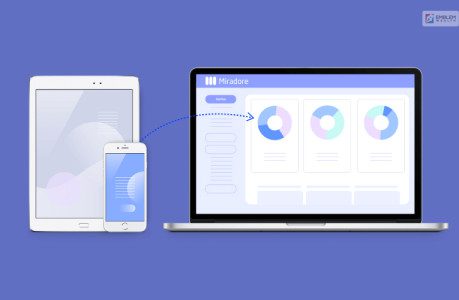Integrating Call Recording Into Corporate Communications: Advantages And Challenges

Virtually every business is on a relentless quest for refinement – boosting sales, streamlining teamwork, ensuring customer retention, and optimizing every operation tier. Craving improvements in your call centers? Consider recording your secret weapon for across-the-board enhancements.
Want to identify the crux of customer unrest? Recordings hold the key. Tapping into call recordings isn’t just for show; it’s a game-changer behind the scenes, too.
However, the importance of call recording for internal corporate communications is rarely used. Businesses probably underestimate this tool.
Let’s break down the pros and cons of using call recording in business settings to see how it stacks up.
Call Recording In Corporate Communications

Advantages Of Call Recording Integration:
- Enhanced Compliance: One of the primary advantages of call recording integration is its ability to bolster regulatory compliance efforts. In sectors like finance, healthcare, and legal work where tight rules are the norm, taping calls keeps everyone on the right side of the law.
- Quality Assurance and Training: Supervisors often turn to call recordings as a goldmine for boosting service quality and upskilling their teams. Bosses can play back calls to pinpoint what needs work, offer guidance on the best ways to handle things and keep up top-notch service everywhere customers reach out.
- Dispute Resolution: In the event of disputes or discrepancies, call recordings provide an objective record of conversations, serving as evidence to resolve conflicts swiftly and accurately. With this feature, we can dial down legal troubles and make sure both the business and its people are on safe ground.
- Insight Generation: Diving into call recordings, we can pick up on what customers love and struggle with, really getting the lowdown on their true needs. Diving into call recordings with the latest analytics and smart AI, companies can dig up vital clues to tweak their workflows, polish their products, and really boost how happy customers are.
- Risk Management: Call recording acts as a risk management tool by documenting important transactions, agreements, and instructions. By documenting calls, a company can dodge the costly bullets of confusion and mistakes, ensuring nothing important falls through the cracks.
What do you mean by recording conversations? This is not necessarily a traditional call center recording system. There is nothing stopping you from using iCall Call Recorder and its functions are sufficient for any task.
If you want to prepare material for speech analytics, the iPhone call recorder app is suitable. Need a phone recorder iPhone? iCall can do the trick.
Nowadays, receiving recording calls does not require large investments. Even a mobile call recorder in the free trial period will be enough to get all the benefits listed above.
Challenges Of Call Recording Integration:
- Privacy Concerns: One of the foremost challenges of call recording integration revolves around privacy considerations. It’s a fine line to walk—keeping track of the info we need for work while also playing by the rules and respecting everyone’s privacy, especially where laws like GDPR come into play.
- Storage and Retention: The sheer volume of recorded calls necessitates robust storage infrastructure and efficient retention policies. Finding the right balance between easy-to-access archives and not breaking the bank on storage is a real head-scratcher, especially with ever-changing rules about how long to keep data.
- Security Risks: Call recordings represent a trove of sensitive information, making them prime targets for cyber threats and unauthorized access. Tightening up security with stuff like tough encryption, solid access checks, and keeping a close eye on things through regular check-ups is super important to keep those call recordings safe from sneaky leaks and prying eyes.
- Regulatory Compliance Complexity: Compliance with various regulatory frameworks adds layers of complexity to call recording initiatives. Getting a grip on how long to keep data, navigating consent hoops, and dealing with info that crosses borders means you’ve got to really get the legal side of things and stay ahead of the game.
- Employee Resistance and Monitoring Concerns: Employees may perceive call recording as intrusive or a threat to their autonomy. It’s key to clearly explain why we’re recording calls and how it’ll help, so everyone feels in the loop and not just watched over.
Strategies For Successful Integration:
- Transparent Communication: Establishing clear communication channels and educating employees about the purpose and benefits of call recording fosters trust and buy-in. Being upfront about what calls get recorded, how the data is used, and the privacy measures in place ease worries and back up a compliance-focused culture.
- Selective Recording: Implementing selective recording protocols allows organizations to capture relevant interactions while minimizing storage and compliance burdens. Focusing on key conversations with certain clients, firms streamline their resources to where they make the biggest splash.
- Data Governance Framework: Crafting a sturdy framework for data governance is key—it’s what lets us handle our recorded info in the smartest way possible. To keep our data in check, we need clear rules for sorting it, deciding who can see what, scrambling sensitive bits, and figuring out how long to hang onto stuff—all lined up with the law and what works for us.
- Technological Integration: Leveraging integrated communication platforms and call recording solutions streamlines implementation and enhances interoperability. When you hook up your call recordings with stuff like CRM systems and automated workflow tools, it not only cranks up the value of that info for sharper business moves but also polishes how things run day-to-day.
- Continuous Monitoring and Adaptation: Regular monitoring of call recording processes, compliance controls, and evolving regulatory landscapes is essential for staying ahead of compliance risks and technological advancements. Staying on top of the game means always tweaking our call recording strategies to line up with the latest rules and what our company aims for.

Wrapping Up
Sure, recording calls for business has its perks, but you’ve got to watch out for privacy issues and legal snares. Of course, but does this mean that it is better to abandon the technology? Absolutely not. When you play your cards right with risk management, you can really level up in the business game.
Read Also:

























Leave A Reply